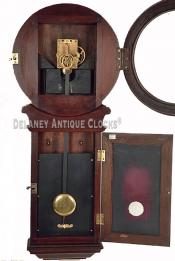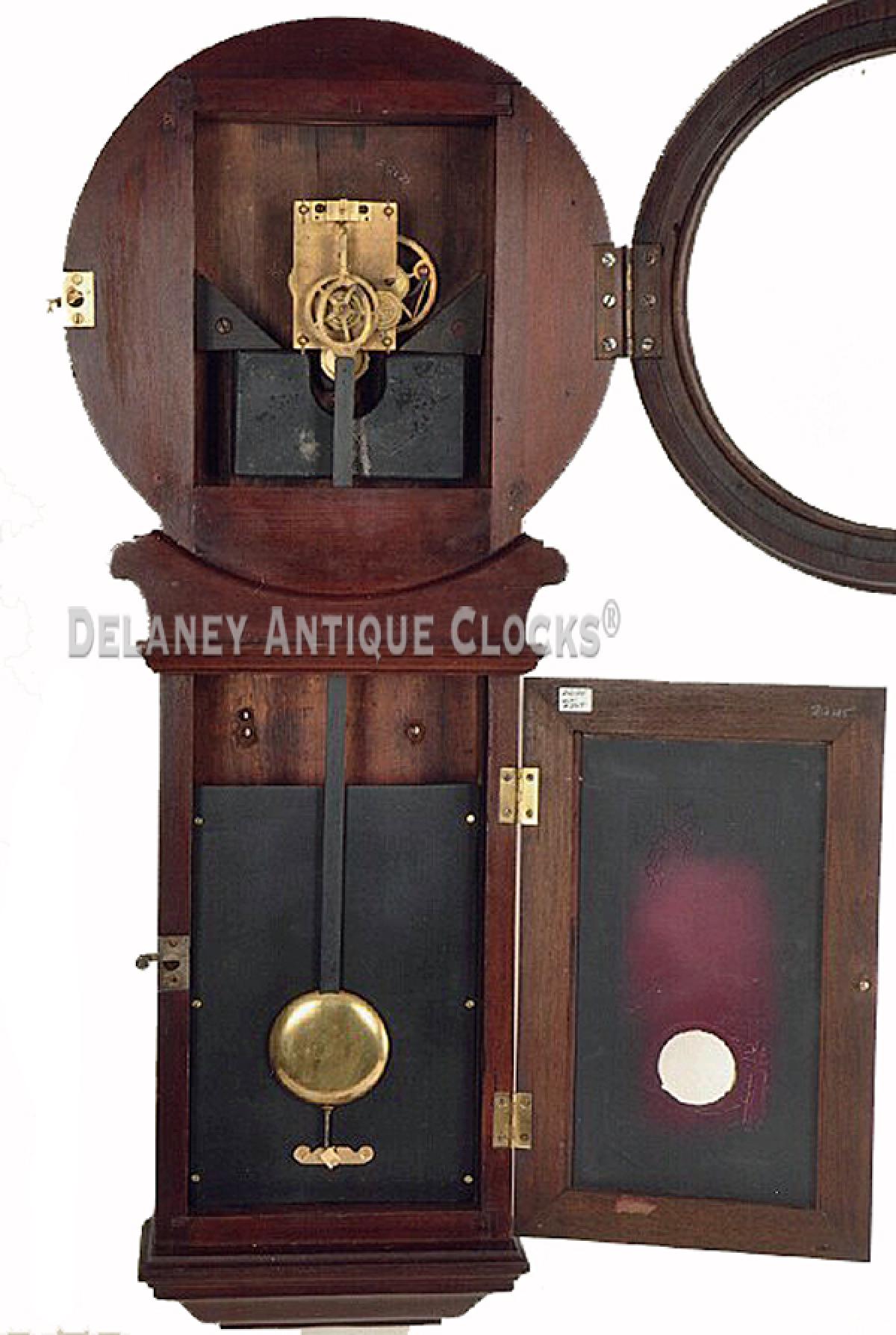Boston Clock Co., Boston, Massachusetts. No. 507. A wall clock. 212125.
This is a very popular form having a circular wooden bezel and a long drop underneath it. Many other clock companies made similar clocks which also sold well. This case appears to be mahogany, and the wood features a mahoganized finish. The case measures approximately 35.5 inches long, which is slightly longer than several of the competitors' examples. Because of the added length, the proportions of the clock appear narrow on the wall. The bezel is fitted with glass and opens to a painted dial. The dial is painted on tin and measures 12 inches in diameter. It is signed by the Retailer in this location, "Daniel Pratt's Son / Boston." The movement is brass and is die-stamped by the Maker on the front plate. It is also numbered "507." The movement is weight driven and is designed to run for eight days on a full wind. The pendulum rod is wood, and the bob is brass. The bob is decorated with an engine-turned design. This is a very good bob. The motion of the pendulum bob can be viewed through the opening in the original painted tablet mounted in the door. This glass has been restored in several locations. The primary color is red. We have owned and seen other examples with red, green, purple, and blue variations in this same location by this manufacturer.
This clock was made circa 1888.
Inventory Number 212085.
The Boston Clock Company was organized by Joseph H. Eastman, James Gerry, and others on May 29, 1884. It was actually located in Chelsea, Mass. This company was formed as the successor to Joseph H. Eastman's Harvard Clock Company 1880-1884. Joseph H. Eastman became the manager of this new firm. This company failed in 1895, and in March of the same year, Joseph Eastman and others tried to revive it as the Eastman Clock Company. This new firm lasted only one year and eventually became the Chelsea Clock Co. in 1897.
The Boston Clock Company manufactured clocks predominately in the style of various crystal regulators, carriage clocks, and other mantel clocks in marble cases. These clocks often featured a compensating balance wheel spring-powered movement. A small number of weight-driven wall clocks were also produced. Most of which were similar in form to the Howard model No., 5 & No., 70 and the Chelsea No., 1.
Boston Clock Company clocks were sold through salesrooms that included Smith & Patterson in Boston, G. S. Lovell & Co in Philadelphia and Wm. H. Atwater in New York.




